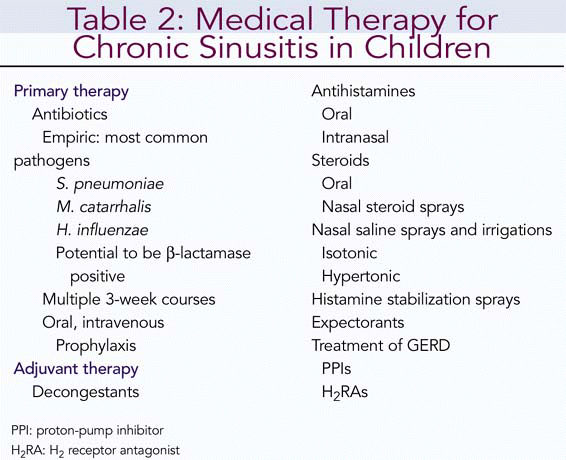Cheryl S. Cotter, MD, is Vice-Chairman in the Department of Surgery at Arnold Palmer Hospital for Children in Orlando, FL. She completed medical school with High Honors at the University of Florida and remained there in the Department of Otolaryngology-Head and Neck Surgery for her residency in otolaryngology.
Explore This Issue
November 2007Cheryl S. Cotter, MD, shares her perspective regarding a more conservative approach to the treatment of pediatric chronic sinusitis.
There are few data to support primary surgical reduction of the inferior turbinates in the pediatric patient. Most patients with chronic sinusitis and allergic rhinitis respond well to medical therapy, and few have persistent nasal obstruction secondary to enlarged inferior turbinates. Some pediatric otolaryngologists perform inferior turbinate reduction concurrent with adenoidectomy. In my experience, however, most patients show marked improvement in nasal airflow with removal of the adenoids alone, even in the context of enlarged turbinates protruding into the posterior choanae or the anterior nasal cavity.
For pediatric patients with chronic sinusitis, I follow a conservative approach, including thorough patient assessment, patient and parent education, and close patient monitoring. Patient assessment (see Patient Assessment, below, and Table 1) includes a thorough history, examination, allergy testing, determining the anatomy of the adenoids and sinuses, sweat test for CF, screening for immunodeficiency, and CT scan for patients not responding to medical therapy.
Treatment (see Maximum Medical Treatment, below, and Table 2) should include intranasal steroid sprays, antihistamines, decongestants, and intranasal saline mist. A CT scan should be performed on patients with true chronic sinusitis who do not respond to allergy medications or other medical treatment. Other potential causes should be ruled out, including CF, immunodeficiency, and immotile cilia syndrome.
Patients with persistent symptoms despite medical therapy are candidates for adenoidectomy. Adenoidectomy is a relatively simple and safe procedure, and clinical data suggest favorable outcomes in comparison to medical treatment.3,11 If, following adenoidectomy and medical therapy, nasal symptoms do not improve, the patient may be considered for inferior turbinectomy. I have needed to perform this procedure only once every few years.
In conclusion, very few pediatric patients with chronic sinusitis fail to respond to a conservative approach with maximal pharmaceutical treatment. Pediatric inferior turbinate reduction does have its place; it can be used as an adjunct to sinus surgery and the removal of polyps. Nevertheless, surgical intervention should be a last resort for the pediatric population.
Patient Assessment
Thorough assessment of the patient with chronic sinusitis can be structured around five categories (Table 1). These five A’s of assessment aim to determine the underlying cause of chronic sinusitis.



Leave a Reply